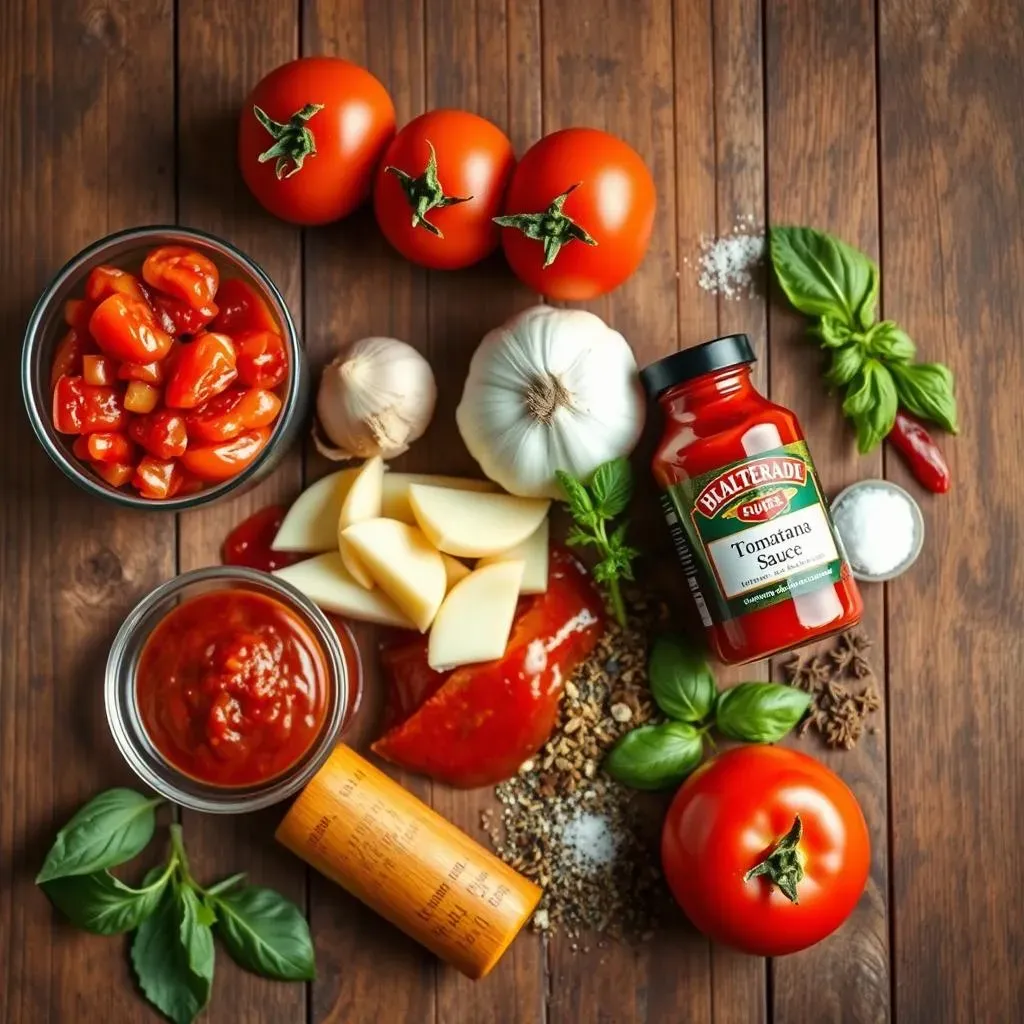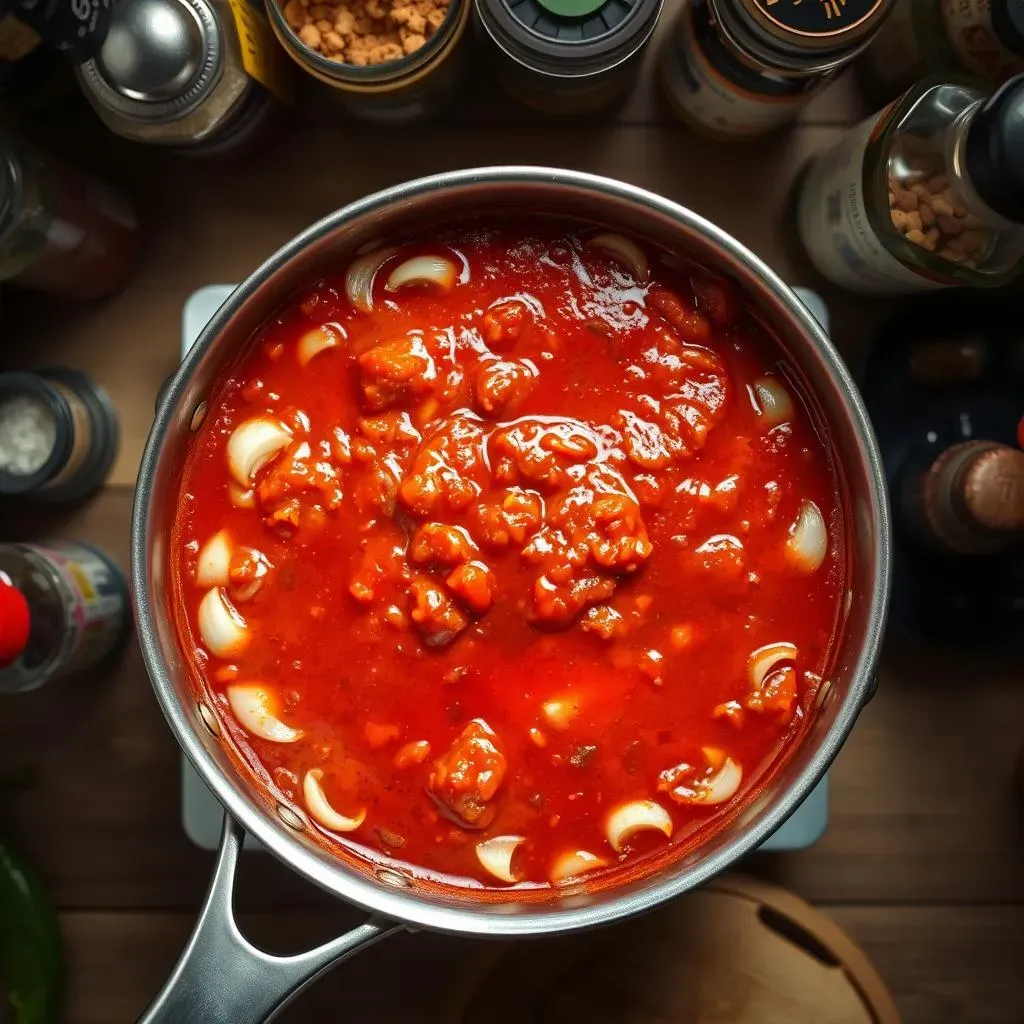Craving that perfect meatball sub, the kind that explodes with flavor in every bite? The secret isn't just in the meatballs; it's in the sauce! Forget the store-bought stuff – we're diving headfirst into the world of homemade meatball sub sauce. Trust me, once you taste the difference, you'll never go back. This article isn't just about a recipe; it's about unlocking the potential of your meatball sub, transforming it from a simple sandwich into a culinary masterpiece. We'll explore why homemade sauce reigns supreme, the key ingredients you'll need, and a simple, step-by-step guide to creating your own signature sauce. Finally, we'll cover the art of assembling the perfect sub, ensuring every element works in harmony. Get ready to elevate your meatball game!
Why Homemade Meatball Sub Sauce Makes All the Difference

Why Homemade Meatball Sub Sauce Makes All the Difference
Beyond the Jar: A Flavor Revelation
Let's be honest, grabbing a jar of marinara from the store is easy. But have you ever stopped to consider what you're missing? Homemade meatball sub sauce isn't just about convenience; it's about control. Control over the ingredients, the flavors, and ultimately, the entire meatball sub experience. It's about taking a humble sandwich and elevating it to something truly special. The difference is night and day, like comparing a mass-produced burger to a gourmet creation crafted with love.
Think of it this way: with a jarred sauce, you're stuck with someone else's idea of "Italian." With homemade, you're the chef, the artist, the flavor maestro! You get to decide the level of sweetness, the kick of spice, the intensity of the herbs. It's a culinary adventure waiting to happen, and your taste buds will thank you for it.
Freshness You Can Taste
One of the biggest advantages of homemade sauce is the freshness factor. Jarred sauces, while convenient, often contain preservatives and additives that can dull the flavor. When you make your own sauce, you're using fresh, vibrant ingredients that sing on your palate. The difference is immediately noticeable.
Imagine the bright, tangy burst of freshly crushed tomatoes, the aromatic perfume of garlic sizzling in olive oil, the herbaceous notes of basil and oregano dancing together. These are flavors you simply can't replicate with processed ingredients. And because you're in charge, you can source the best possible ingredients, from locally grown tomatoes to artisanal olive oil. The result is a sauce that's not only delicious but also a celebration of fresh, seasonal flavors.
Customization is Key: Tailor-Made Taste
Here's where the real magic happens: customization. With homemade meatball sub sauce, you can tailor the flavor profile to perfectly match your preferences. Want a sweeter sauce? Add a touch of honey or brown sugar. Prefer a spicy kick? Throw in some red pepper flakes or a pinch of cayenne. Love the taste of roasted garlic? Roast a whole head and blend it into your sauce. The possibilities are endless!
This level of control is impossible to achieve with a jarred sauce. You're stuck with whatever flavor profile the manufacturer has decided on. But with homemade, you're the boss. You can experiment with different herbs, spices, and vegetables to create a sauce that's uniquely your own. It's a chance to unleash your inner chef and create a meatball sub that's truly unforgettable. Plus, you can adjust the recipe based on dietary needs, like reducing sodium or adding more vegetables.
Essential Ingredients for the Best Homemade Meatball Sub Sauce

Essential Ingredients for the Best Homemade Meatball Sub Sauce
The Tomato Trio: Base of Flavor
First, let's talk tomatoes. They are the foundation of any great meatball sub sauce. But which tomatoes should you use? I'm a big fan of using a combination for depth of flavor. Canned crushed tomatoes provide a rich, smooth base. Canned tomato sauce adds sweetness and body. And a small can of tomato paste brings intense, concentrated tomato flavor. Don't skimp on quality here; opt for San Marzano tomatoes if you can find them – they're worth the splurge!
Consider this: the better the tomatoes, the better the sauce. It's that simple. Look for canned tomatoes that are bright red and packed in juice, not water. Avoid cans that are dented or bulging, as this can be a sign of spoilage. And if you're feeling ambitious, you can even use fresh tomatoes, but be prepared for a bit more work – you'll need to peel and seed them first.
Aromatic All-Stars: Garlic, Onions, and Herbs
Next up, the aromatics! This is where your sauce really starts to come to life. Garlic and onions are essential for building a savory foundation. I prefer to use yellow onions for their mild sweetness, but you can also use white onions if that's what you have on hand. As for garlic, fresh is always best. Mince it finely or use a garlic press to release its pungent flavor.
Then there are the herbs. Dried oregano and basil are classic Italian flavors that add warmth and complexity to the sauce. But don't be afraid to experiment! A pinch of red pepper flakes can add a touch of heat, while a bay leaf provides a subtle, earthy note. And if you're feeling fancy, you can even add a sprig of fresh rosemary or thyme. Just remember to remove it before serving.
Sweetness, Spice, and Everything Nice: Balancing the Flavors
Finally, let's talk about balancing the flavors. A touch of sweetness helps to offset the acidity of the tomatoes and create a more harmonious sauce. I like to use a teaspoon of sugar or honey, but you can also use a splash of balsamic vinegar for a more complex flavor. Salt and pepper are essential for seasoning, but don't be afraid to get creative with other spices.
A pinch of Italian seasoning can add a boost of flavor, while a dash of smoked paprika can bring a smoky depth to the sauce. And if you're feeling adventurous, you can even add a splash of Worcestershire sauce for a savory umami kick. Just remember to taste as you go and adjust the seasonings to your liking. The goal is to create a sauce that's perfectly balanced, with a hint of sweetness, a touch of spice, and a whole lot of flavor.
Ingredient | Purpose | Notes |
|---|---|---|
Crushed Tomatoes | Base | San Marzano recommended |
Tomato Sauce | Sweetness, Body | Look for low-sodium options |
Tomato Paste | Concentrated Flavor | Adds richness and depth |
Garlic | Aromatic | Freshly minced is best |
Onion | Aromatic | Yellow or white |
Dried Oregano | Herb | Classic Italian flavor |
Dried Basil | Herb | Adds warmth and complexity |
Sugar/Honey | Sweetness | Balances acidity |
Salt & Pepper | Seasoning | To taste |
StepbyStep Guide: Making Your Own Meatball Sub Sauce at Home

StepbyStep Guide: Making Your Own Meatball Sub Sauce at Home
Getting Started: Sautéing the Aromatics
Alright, let's get cooking! The first step is to build a flavor base by sautéing our aromatics. Grab a large saucepan or Dutch oven and drizzle in a generous amount of olive oil – enough to coat the bottom. Heat it over medium heat until it shimmers. Add your minced garlic and chopped onions and cook, stirring frequently, until they're softened and fragrant. This usually takes about 5-7 minutes. Be careful not to burn the garlic, as it can turn bitter. You want them to be golden brown and smelling delicious!
This step is crucial because it releases the essential oils in the garlic and onions, infusing the oil with flavor. That infused oil will then carry that flavor throughout the entire sauce. It's like building a house; you need a strong foundation before you can start adding the walls and roof.
Simmering to Perfection: Building Depth of Flavor
Now for the main event: adding the tomatoes! Pour in your crushed tomatoes, tomato sauce, and tomato paste. Stir well to combine everything. Add your dried oregano, basil, and any other spices you're using. Bring the sauce to a simmer, then reduce the heat to low, cover, and let it cook for at least 30 minutes, or up to an hour. The longer it simmers, the more the flavors will meld together and deepen. Stir occasionally to prevent sticking.
Simmering is the key to a great sauce. It allows the tomatoes to break down and release their sweetness, while also allowing the herbs and spices to infuse the sauce with their flavor. Think of it like a slow dance; the longer you dance, the closer you get. The same is true for sauce; the longer it simmers, the closer the flavors get to each other.
Taste and Adjust: Your Personal Touch
After simmering, it's time to taste and adjust. This is where you get to put your personal touch on the sauce. Add a pinch of sugar or honey if it's too acidic. Add a pinch of salt and pepper if it needs more seasoning. If you want a spicier sauce, add a pinch of red pepper flakes. And if you want a richer sauce, add a tablespoon of butter or olive oil. Just remember to taste as you go and adjust the seasonings to your liking.
This is your chance to make the sauce your own. Don't be afraid to experiment and try new things. After all, cooking is all about having fun and creating something delicious. And once you've perfected your sauce, you can use it for all sorts of things, not just meatball subs. Think spaghetti, lasagna, pizza... the possibilities are endless!
Step | Action | Time |
|---|---|---|
1 | Sauté Aromatics | 5-7 minutes |
2 | Add Tomatoes & Spices | - |
3 | Simmer | 30-60 minutes |
4 | Taste & Adjust | - |
Meatball Sub Assembly: From Sauce to Satisfying Sandwich

Meatball Sub Assembly: From Sauce to Satisfying Sandwich
Bread Basics: Choosing Your Canvas
Alright, you've got this amazing homemade meatball sub sauce simmering away, now it's time to talk bread! The bread is your canvas, the foundation upon which you'll build your masterpiece. You want something sturdy enough to hold all those juicy meatballs and sauce without falling apart, but also soft enough to be enjoyable to eat. I personally love a good hoagie roll, but a French roll or even a ciabatta roll can work well too. The key is to find something that's crusty on the outside and soft on the inside. This provides a nice textural contrast to the soft meatballs and sauce.
Think about it: a flimsy piece of bread will just disintegrate under the weight of the filling, leaving you with a soggy mess. But a bread that's too hard will be difficult to bite through and can even hurt your mouth. You want that "Goldilocks" bread – not too hard, not too soft, just right! Also, consider toasting the bread. Toasting adds another layer of texture and helps the bread hold up even better against the sauce.
Cheese, Please!: Adding Creamy Goodness
No meatball sub is complete without cheese! The cheese adds a creamy, melty goodness that complements the savory meatballs and tangy sauce perfectly. Provolone is the classic choice, and for good reason. It melts beautifully and has a mild, slightly tangy flavor that pairs well with the other ingredients. But don't be afraid to experiment! Mozzarella is another great option, especially if you're looking for a more mild flavor. Or, for a bolder flavor, try using some shredded Parmesan or Asiago.
The key is to use a cheese that melts well and complements the other flavors in the sub. You can either layer the cheese on top of the meatballs and sauce or melt it directly onto the bread before adding the filling. Either way, make sure the cheese is nice and melty before serving. There's nothing worse than a meatball sub with cold, unmelted cheese!
The Grand Finale: Meatballs, Sauce, and Assembly
Finally, the moment we've all been waiting for: assembling the meatball sub! Start by spooning a generous amount of your homemade meatball sub sauce onto the bottom half of the bread. Then, arrange your cooked meatballs on top of the sauce. Don't be shy; load them up! Next, spoon more sauce over the meatballs, making sure they're fully coated. Finally, top with your cheese of choice. If you haven't already melted the cheese, you can either pop the subs under the broiler for a minute or two or cover them with foil and bake them in a preheated oven until the cheese is melted and bubbly.
Once the cheese is melted, carefully remove the subs from the oven or broiler and let them cool slightly before serving. Garnish with some fresh basil or parsley, if desired. And there you have it: a delicious, homemade meatball sub that's sure to impress! Enjoy!
Step | Action |
|---|---|
1 | Sauce the Bread |
2 | Add Meatballs |
3 | Top with Cheese |
4 | Melt Cheese |
5 | Serve & Enjoy! |
Your Meatball Sub Sauce Adventure Awaits
So, there you have it! Crafting your own homemade meatball sub sauce is easier than you might think, and the flavor payoff is immense. From understanding the importance of fresh ingredients to mastering the art of simmering, you're now equipped to create a sauce that perfectly complements your meatballs and elevates your sub to legendary status. Don't be afraid to experiment with different herbs, spices, and tomatoes to find your signature blend. Now, go forth and build the meatball sub of your dreams!